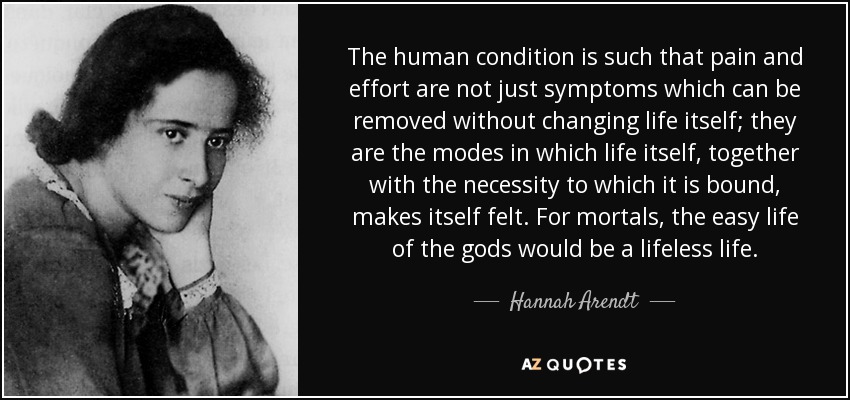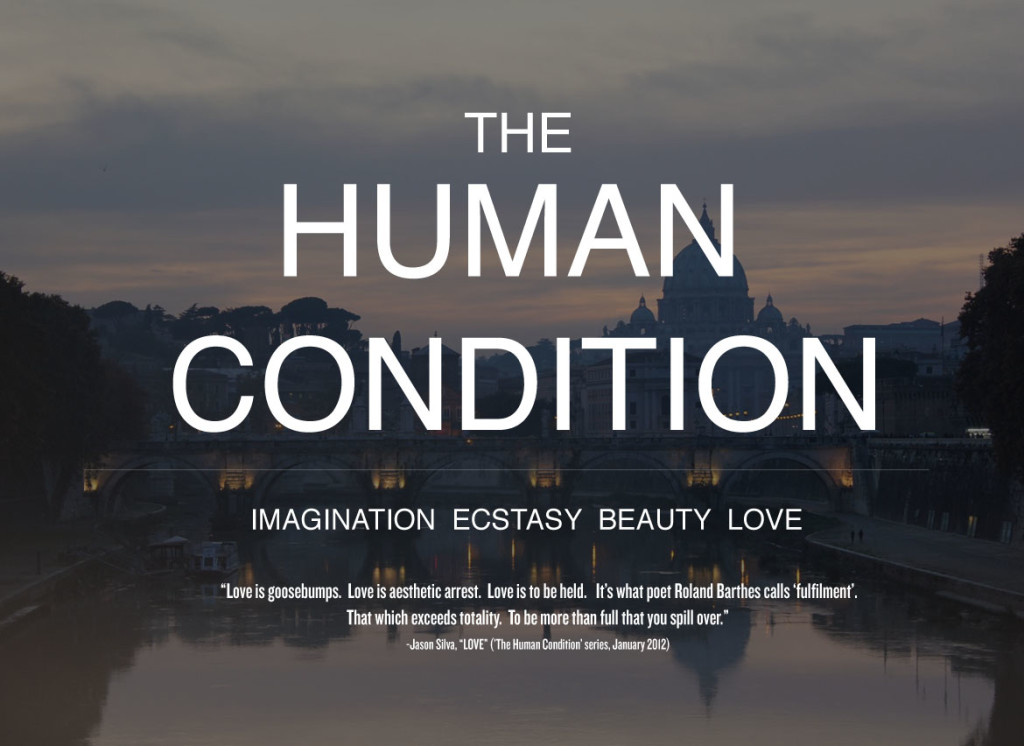Aspects of human nature – like our capacity for language, reasoning or emotions – are amenable to scientific analysis that looks at where they come from and how they work, using tools like evolutionary biology, genetics, or neuroscience. But not everything about us that is important is innate. Many deeply entrenched features and characteristics of human life are contingent not essential. They come from our human history, not our human biology. Such aspects of the human condition – like marriage, sports, and war – resist scientific analysis and must be studied in a more humanistic way.
The key to grasping the difference between these two distinct modes of anthropology is to look beyond how important and even seemingly ubiquitous certain characteristics are in modern human populations. We must insert a question mark between the empirical factthat a feature is characteristic of human life as we know it, and the empirical claim that this feature stems from human nature itself i.e. that it is intrinsic to homo sapiens qua species.Sometimes this is easy to tell. No one – I hope – would argue that cooking is part of human nature, despite its ubiquity and importance in our evolutionary history, because it so obviously requires external tools and resources that it is clearly an invention. Sport is also obviously not part of human nature since it has appeared too recently. (Playing games is not the same thing, though it obviously shares some constitutive elements.) But some features of human life have long confused researchers who mistake their contemporary dominance for biological naturalness. I will look at three particularly controversial cases: war, religion, and gender.
War
War is an unfortunate and seemingly intractable aspect of human existence that is often attributed to human nature – i.e. our innate aggressiveness and/or abstracted social forces such as the Hobbesian competition for resources or glory. But, as the anthropologist Margaret Mead pointed out in a celebrated essay (“Warfare Is Only An Invention – Not a Biological Necessity”) the facts tell otherwise. The key idea of organised group violence essential to the ‘war package’ is absent from some more isolated parts of the world, nor does its presence correlate with levels of inter-personal aggression or material/organisational sophistication. The scientific theories of the naturalness of war are definitively refuted by this lack of correlation, a fact they studiously ignore. Though some such theories may be relevant for understanding the course and nature of contemporary warfare, they do not explain the existence of war itself.
So what is war? In her essay Mead argued that war should be understood as an inventionthat has wrapped itself around us, bringing immediate gains to those who pick it up and master it, and immediate losses to those in their proximity who fail to do so. That makes it part of humanity’s history, mediated by our human experience, rather than the direct product of either our genes or the universal iron laws of economics.Religion
Religion is generally taken to be an autonomous and distinct aspect of human nature whose origins and operations are amenable to scientific analysis. Scientists have been busy searching for the ‘religion gene’ in our DNA and trying to capture the ‘religion brain module’ at work by scanning the brains of people at prayer. This investigation assumes that religion is a natural feature that is stable enough to withstand scientific scrutiny. But religion as we normally understand it is actually a package that bundles a number of distinct features: specific ideas about supernatural agency, moral codes, rituals, certain kinds of experiences, membership of a community of fellow believers, and specialist institutions like churches and clergy.
It is not surprising that the scientists have been unsuccessful, that the harder they search for ‘religion’ inside us the more the package seems to dissolve. Cultural anthropologists could have saved them a lot of trouble since their research clearly shows that this concept of religion is a relatively recent invention by humans, and although dominant is far from being ubiquitous even in our modern world.
It is true that religion-compatible behaviours are very common and may plausibly have direct origins in human nature, such as belief in super-human agency, magic, origin stories, sacred rituals and places, ecstatic experiences, etc. Essentialists therefore respond to the critique by widening their definition of religion to incorporate these via some claim to ‘family-resemblance’ (just as believers in the essentialness of war stretch their definition to include any interpersonal violence).
I think one should be automatically suspicious of the self-serving character of this extension. Such characteristics are found only in a fragmented way (not as the full ‘religious package’) and it isn’t clear why we would call them ‘religious’ if we weren’t already so focussed on lumping things into that category. The fact that one could plausibly include communist ideology, vegetarianism, Western consumerism, and general altruism in such an expansive family of ‘religious’ traits suggests that it isn’t exactly cutting nature at its joints, as a good scientific category should.

Gender
Gender offers a particularly interesting, and controversial, case for the application of this distinction, since there clearly are some natural physiological distinctions between men and women. I will concentrate here on the common belief that gender roles are substantially hard-wired and are therefore natural, and that science proves this.
If sexual differentiation is natural, women and men really are hardwired to be complementary to each other – matching soft female empathy to cold male logic, nurturer to provider, nurse to doctor, etc. – as Rousseau, and now an assortment of scientistic neurologists and evolutionary psychologists, have argued so conveniently. These scientists note that human societies are heavily gendered e.g. that ‘even in the liberated west’, women express more concern about the feelings of other people than men do. They also note that there are some physiological differences in brain structures between men and women. They then spend a lot of time trying to find ways to correlate the two.
If they are correct, then significant feminist claims are empirically disproved, since, as the saying goes, ‘you can’t change human nature’. So attempts to help women achieve excellence (e.g. Nobel prizes for anything but literature) are doomed efforts at social engineering. We would do better to reconcile ourselves to the different but complementary interests and strengths of men and women, for example by ensuring that ‘women’s professions’ get a fairer share of social status and pecuniary reward.
On the other hand, does this scientific evidence really stack up? The natural essences approach consists of a search for physiological or ‘evolutionary strategy’ differences that will explain the ‘fact’ that men and women are innately different, i.e. it is correlation seeking rather than mechanism testing. That makes it rather biased in the kind of answers it can produce.
In any case looking for answers so far away – in the brain, or the savannah environment H. sapiens evolved in 200,000 years ago – seems rather obtuse. Surely we have evidence right in front of our eyes about how our more or less insidious socialising norms and institutions re-produce gender? Mary Wollstonecraft pointed this out in response to Rousseau’s superficial justification of the way things are, way back in 1792.
Evidence of natural difference is not evidence of relevant difference. As Plato noted a very long time ago (in Book 5 of The Republic) the fact that men and women are naturally – physiologically – different in certain ways is not necessarily any more relevant to their abilities than being long-haired or bald is relevant to being a good cobbler. A further argument is needed to move from such facts as that women can give birth, or that 5 year old girls tend to have a strong gender identity (dress up as princesses and play with dolls, etc.), to conclusions about women’s ‘natural’ inability to do mathematics or run companies or hold political office. And that argument is nearly always absent or spurious.
A more contemporary reprise of this point can be found in Cordelia Fine’s scathing and systematic critique* of the neuro-scientific evidence for the naturalness of gender, which she argues is so methodologically flawed as to constitute neurosexism rather than science. Fine points out, for example, that surveys reveal what people think they should feel and so do not constitute a real test of whether women are actually, let alone ‘naturally’, more caring. And she points out that mapping sexual differences in brain physiology is a trivial exercise (mere phrenology) without some demonstration that these differences directly produce significantly different functioning.

Conclusion
The distinction between human nature and the human condition has implications that go beyond whether some academic sub-fields are built on fundamental error and thus a waste of time (hardly news). The foundational mistake of assuming that certain features prominent among contemporary human beings are true of H. sapiens and therefore true of all of us has implications for how we think about ourselves now. There is a lack of adequate critical reflection – of a true scientific spirit of inquiry – in much of the naturalising project. It fits all too easily with our natural desire for a convenient truth: that the way the world seems is the way it has to be.
For example, many people believe that to be human is to be religious – or at least to have a ‘hunger for religion’ – and argue as a result that religion should be accorded special prominence and autonomy in our societies – in our education, civil, and political institutions. American ‘secularism’ for example might be said to be built on this principle: hence all religions are engaged in a similar project of searching for the divine and deserve equal respect. The pernicious implication is that the non-religious (who are not the same as atheists, by the way) are somehow lacking in an essential human capability, and should be pitied or perhaps given help to overcome the gaping hole in their lives.
Anatomically modern humans have been around in our current form for around 200,000 years but while our physiological capacities have scarcely changed we are cognitively very different. Human beings operate in a human world of our own creation, as well as in the natural, biological world that we are given. In the human world people create new inventions – like religion or war or slavery or romantic love – that do something for them. Those inventions succeed and spread in so far as they are amenable to our human nature and our other inventions, and by their success they condition us to accept the world they create until it seems like it could not have been otherwise.
Recognising the fact that the human condition is human-made offers us the possibility to scrutinise it, to reflect, and perhaps even to adopt better inventions. Slavery was once so dominant in our human world that even Aristotle felt obliged to give an account of its naturalness: some people are just naturally slavish. But we discovered a better invention – the market economy – that has made inefficient slavery obsolete and now almost extinct. Which is not to say that this invention is perfect either. The human condition concerns humans as we are, but not as we have to be.

